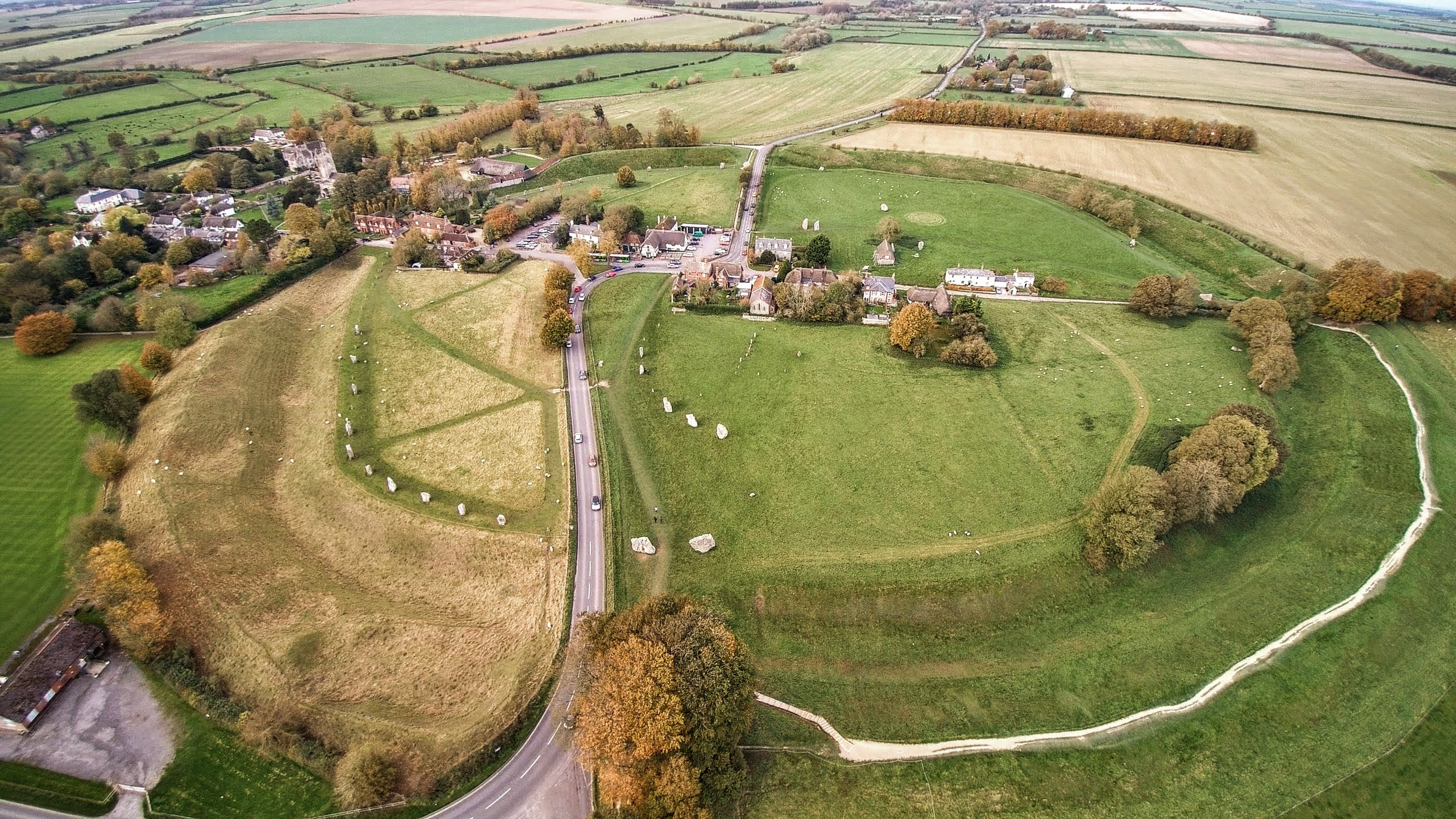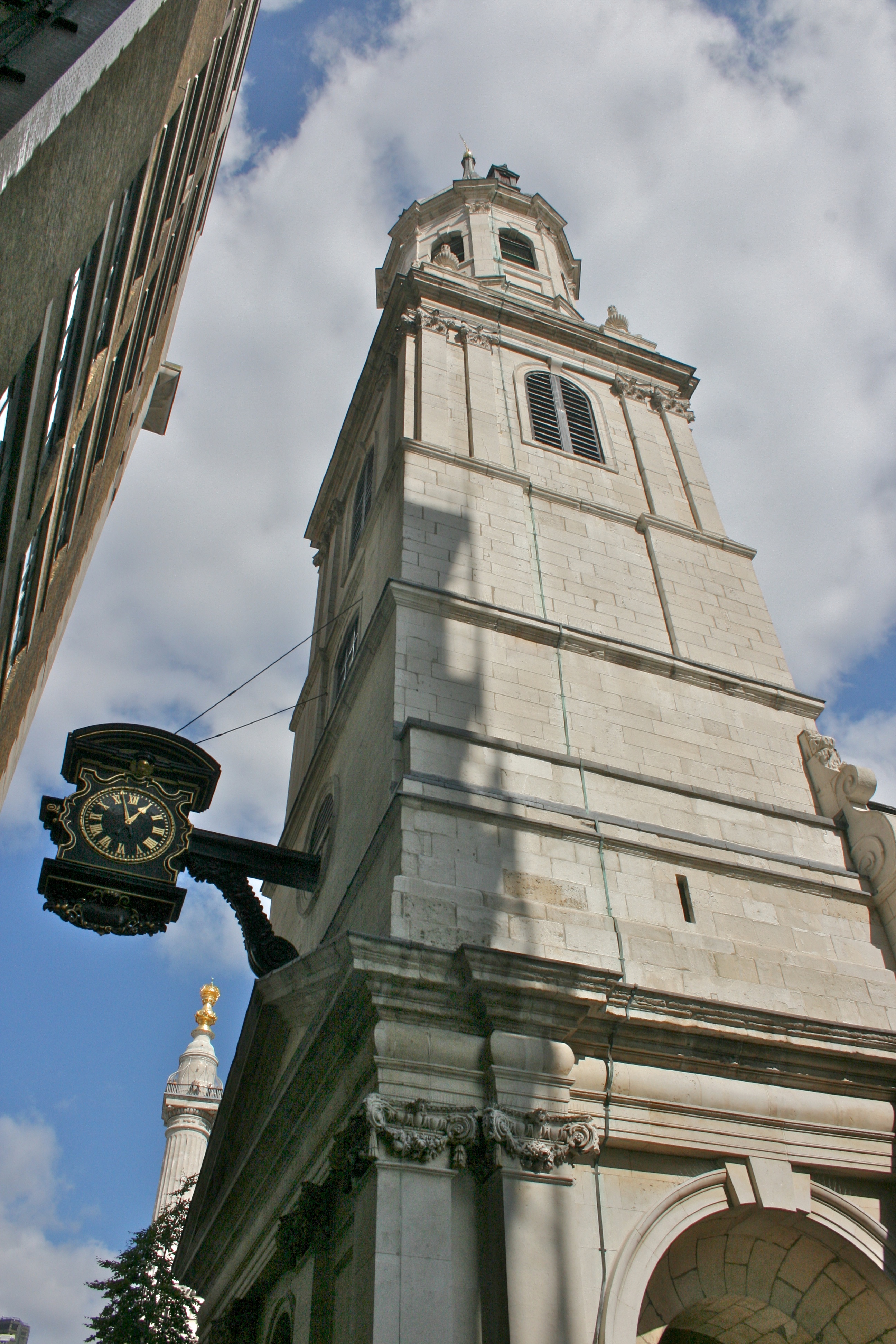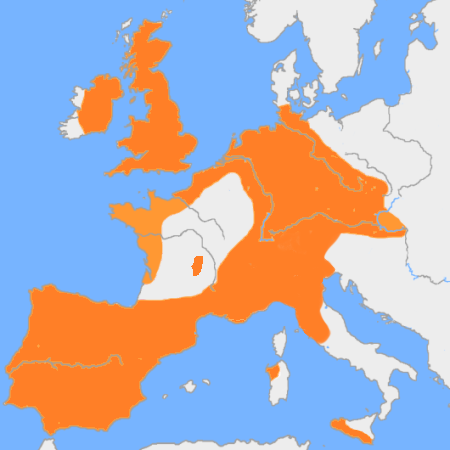|
East Kennett
East Kennett is a village and civil parish in Wiltshire, England, west of Marlborough. The United Kingdom Census 2011 recorded a parish population of 84. The River Kennet forms most of the northern boundary of the parish, and the village lies close to the river. The neighbouring village of West Kennett is on the opposite bank a short distance upstream, in Avebury parish. History Evidence of prehistoric activity includes a Neolithic long barrow, probably a communal burial site, on a hillside south of the present village; this monument is part of the Stonehenge and Avebury World Heritage Site. Further south, a circle of sarsen stones is possibly from the Bronze Age. The Ridgeway, an ancient trackway, passes through East Kennet village. Some 600 metres north of the village, at Overton Hill, the trackway becomes the Ridgeway National Trail which runs northeast as far as Buckinghamshire. The Domesday Book of 1086 recorded holdings in Chenete, the area which later became East and ... [...More Info...] [...Related Items...] OR: [Wikipedia] [Google] [Baidu] |
Avebury, Wiltshire
Avebury () is a Neolithic henge monument containing three stone circles, around the village of Avebury in Wiltshire, in south-west England. One of the best-known prehistoric sites in Britain, it contains the largest megalithic stone circle in the world. It is both a tourist attraction and a place of religious importance to contemporary pagans. Constructed over several hundred years in the third millennium BC, during the Neolithic, or New Stone Age, the monument comprises a large henge (a bank and a ditch) with a large outer stone circle and two separate smaller stone circles situated inside the centre of the monument. Its original purpose is unknown, although archaeologists believe that it was most likely used for some form of ritual or ceremony. The Avebury monument is a part of a larger prehistoric landscape containing several older monuments nearby, including West Kennet Long Barrow, Windmill Hill and Silbury Hill. By the Iron Age, the site had been effectively abandoned, ... [...More Info...] [...Related Items...] OR: [Wikipedia] [Google] [Baidu] |
Sarsen
Sarsen stones are silicification, silicified sandstone blocks found extensively across southern England on the Salisbury Plain and the Marlborough Downs in Wiltshire; in Kent; and in smaller quantities in Berkshire, Essex, Oxfordshire, Dorset, and Hampshire. Geology Sarsen stones are the post-glacial remains of a cap of Cenozoic silcrete that once covered much of southern England. This is thought to have formed during Neogene to Quaternary weathering by the silicification of Upper Paleocene Lambeth Group sediments, resulting from acid leaching. Etymology There are several potential sources for the word "sarsen." The first is that word "sarsen" is a shortening of "Saracen stone" which arose in the Wiltshire dialect. In the Middle Ages, "Saracen" was a common name for Muslims, and came by extension to be used for anything regarded as non-Christian, whether Muslim or pagan in contrast to Christianity. The second is that "sarsen" is vernacular variation of the Indo-European "sasan ... [...More Info...] [...Related Items...] OR: [Wikipedia] [Google] [Baidu] |
Church Of England Parish Church
A parish church in the Church of England is the church which acts as the religious centre for the people within each Church of England parish (the smallest and most basic Church of England administrative unit; since the 19th century sometimes called the ecclesiastical parish, to avoid confusion with the civil parishes in England, civil parish which many towns and villages have). In many English villages the church is a prominent landmark and its tower is often the tallest structure in the settlement. Parishes in England In England, there are parish churches for both the Church of England and the Roman Catholic Church. References to a "parish church", without mention of a denomination, will, however, usually be to those of the Church of England due to its status as the Established Church. This is generally true also for Wales, although the Church in Wales is Welsh Church Act 1914, dis-established. The Church of England is made up of parishes, each one forming part of a dioce ... [...More Info...] [...Related Items...] OR: [Wikipedia] [Google] [Baidu] |
Christ Church (geograph 1963154)
Christ Church may refer to: Churches in Australia New South Wales * Christ Church, Bong Bong * Christ Church, Lavender Bay * Christ Church, Queanbeyan * Christ Church, Rouse Hill, Sydney * Christ Church St Laurence, Sydney * Christ Church Anglican Church, Bungonia * Christ Church Anglican Church, Springwood * Christ Church Cathedral, Grafton * Christ Church Cathedral, Newcastle Northern Territory * Christ Church Cathedral, of the Anglican Diocese of the Northern Territory, Darwin Queensland * Christ Church, Childers * Christ Church, Milton, Brisbane * Christ Church Anglican Church, St Lawrence South Australia * Christ Church, North Adelaide Victoria * Christ Church, Geelong * Christ Church, Hawthorn, Melbourne * Christ Church, South Yarra, Melbourne Tasmania * Christ Church, Launceston Churches in Canada * Christ Church, Amherstburg, Ontario * Christ Church, Maugerville, a National Historic Site of Canada in New Brunswick * Christ Church Royal Chapel, Deseronto, ... [...More Info...] [...Related Items...] OR: [Wikipedia] [Google] [Baidu] |
Benefice
A benefice () or living is a reward received in exchange for services rendered and as a retainer for future services. The Roman Empire used the Latin term as a benefit to an individual from the Empire for services rendered. Its use was adopted by the Western Church in the Carolingian era as a benefit bestowed by the crown or church officials. A benefice specifically from a church is called a precaria (pl. ''precariae''), such as a stipend, and one from a monarch or nobleman is usually called a fief. A benefice is distinct from an allod, in that an allod is property owned outright, not bestowed by a higher authority. Catholic Church Roman imperial origins In ancient Rome a ''benefice'' was a gift of land ( precaria) for life as a reward for services rendered, originally, to the state. The word comes from the Latin noun ''beneficium'', meaning "benefit". Carolingian era In the 8th century, using their position as Mayor of the Palace, Charles Martel, Carloman I and Pepin ... [...More Info...] [...Related Items...] OR: [Wikipedia] [Google] [Baidu] |
Lockeridge
Lockeridge is a village in Wiltshire, England. It lies at the edge of the West Woods in the Kennet Valley, west of Marlborough, Wiltshire, Marlborough, east of Avebury and south of Swindon. It is south of the A4 road (England), A4 road which was historically the main route from London to the west of England. Lockeridge Dene is a hamlet immediately southwest of the village. Lockeridge and its surroundings have provided evidence of Stone Age, Stone and Bronze Age activity in the area. Field enclosures close to the village indicate Roman Britain, Roman occupation, whilst the village itself appears in the ''Domesday Book'' of 1086. Lockeridge today forms an agricultural and commuter community with no local industry. The community is served by a village pub, the ''Who'd a Thought It''. History The area has extensive evidence of Neolithic settlement and a Bronze Age burial site was discovered behind the school in the 19th century. Field enclosures on White Hill (a ridge above t ... [...More Info...] [...Related Items...] OR: [Wikipedia] [Google] [Baidu] |
Elementary School (England And Wales)
Elementary schools were the first schools in England and Wales intended to give a basic education to the children of working class families. At the start of the 19th century, the only schooling available to these young people was run by private concerns or by charities, and was often of a very poor standard. In the first decades of that century, a network of elementary schools was established by societies backed by the Christian churches. In an effort to expand this "voluntary" system, the government made grants available to these societies, initially for new school buildings but later towards their running costs. It became apparent that although this system worked reasonably well in rural communities, it was far less successful in the rapidly expanding industrial cities, and that Britain was falling behind the rest of the developed world. In 1870, an act of parliament established elected School boards in England and Wales, school boards throughout England and Wales, which were em ... [...More Info...] [...Related Items...] OR: [Wikipedia] [Google] [Baidu] |
Overton Hill
Overton Hill is a 571 ft (174 m) hill at the southern edge of the Marlborough Downs in Wiltshire, England. It lies just west of the village of West Overton and about west from the town of Marlborough. The A4 road passes close to the north, and to the south is the River Kennet. The hill is notable for being the start point of the Ridgeway National Trail, which follows an ancient trackway. There several scheduled archaeological sites including several round barrows (burial mounds) on it, and the site of an Iron Age wooden circle known as The Sanctuary, indicating human activity for thousands of years. The hill is part of the Avebury section of the Stonehenge and Avebury World Heritage Site Stonehenge, Avebury and Associated Sites is a UNESCO World Heritage Site (WHS) in Wiltshire, England. The WHS covers two large areas of land separated by about , rather than a specific monument or building. The sites were inscribed as co-listing .... References Hills of Wiltshire ... [...More Info...] [...Related Items...] OR: [Wikipedia] [Google] [Baidu] |
Ancient Trackway
Historic roads (or historic trails in the US and Canada) are paths or routes that have historical importance due to their use over a period of time. Examples exist from prehistoric times until the early 20th century. They include ancient trackways, long-lasting roads, important trade routes, and migration trails. Many historic routes, such as the Silk Road, the Amber Road, and the Royal Road of the Persian Empire, covered great distances and their impact on human settlements remain today. The Post Track, a prehistoric causeway in the valley of the River Brue in the Somerset Levels, England, is one of the oldest known constructed trackways and dates from around 3800 BCE. The world's oldest known paved road was constructed in Egypt some time between 2600 and 2200 BC. The Roman roads, Romans were the most significant road builders of the ancient world. At the peak of the Roman Empire there were more than of roads, of which over were stone-paved. Another empire, that of the Inca ... [...More Info...] [...Related Items...] OR: [Wikipedia] [Google] [Baidu] |
The Ridgeway
The Ridgeway is a ridgeway or ancient trackway described as Britain's oldest road. The section clearly identified as an ancient trackway extends from Wiltshire along the chalk ridge of the Berkshire Downs to the River Thames at the Goring Gap, part of the Icknield Way which ran, not always on the ridge, from Salisbury Plain to East Anglia. The route was adapted and extended as a National Trail, created in 1972. The Ridgeway National Trail follows the ancient Ridgeway from Overton Hill, near Avebury, to Streatley, then follows footpaths and parts of the ancient Icknield Way through the Chiltern Hills to Ivinghoe Beacon in Buckinghamshire. The National Trail is long. History For at least 5,000 years travellers have used the Ridgeway. The Ridgeway provided a reliable trading route to the Dorset coast and to the Wash in Norfolk. The high dry ground made travel easy and provided a measure of protection by giving traders a commanding view, warning against potential attac ... [...More Info...] [...Related Items...] OR: [Wikipedia] [Google] [Baidu] |
Bronze Age Britain
Bronze Age Britain is an era of British history that spanned from until . Lasting for approximately 1,700 years, it was preceded by the era of Neolithic Britain and was in turn followed by the period of Iron Age Britain. Being categorised as the Bronze Age, it was marked by the use of copper and then bronze by the prehistoric Britons, who used such metals to fashion tools. Great Britain in the Bronze Age also saw the widespread adoption of agriculture. During the British Bronze Age, large megalithic monuments similar to those from the Late Neolithic continued to be constructed or modified, including such sites as Avebury, Stonehenge, Silbury Hill and Must Farm. That has been described as a time "when elaborate ceremonial practices emerged among some communities of subsistence agriculturalists of western Europe". History Early Bronze Age (EBA), c. 2500–1500 BC There is no clear consensus on the date for the beginning of the Bronze Age in Great Britain and Ireland. Some ... [...More Info...] [...Related Items...] OR: [Wikipedia] [Google] [Baidu] |
Stonehenge, Avebury And Associated Sites
Stonehenge, Avebury and Associated Sites is a UNESCO World Heritage Site (WHS) in Wiltshire, England. The WHS covers two large areas of land separated by about , rather than a specific monument or building. The sites were inscribed as co-listings in 1986. Some large and well known monuments within the WHS are listed below, but the area also has an exceptionally high density of small-scale archaeological sites, particularly from the prehistoric period. More than 700 individual archaeological features have been identified. There are 160 separate scheduled monuments, covering 415 items or features. Stonehenge and associated monuments The Stonehenge area of the WHS is in south Wiltshire. It covers an area of 26 square km and is centred on the prehistoric monument of Stonehenge. Ownership is shared between English Heritage, the National Trust, the Ministry of Defence, the RSPB, Wiltshire Council, and private individuals and farmers. Monuments in the Stonehenge WHS *Stonehenge * St ... [...More Info...] [...Related Items...] OR: [Wikipedia] [Google] [Baidu] |






